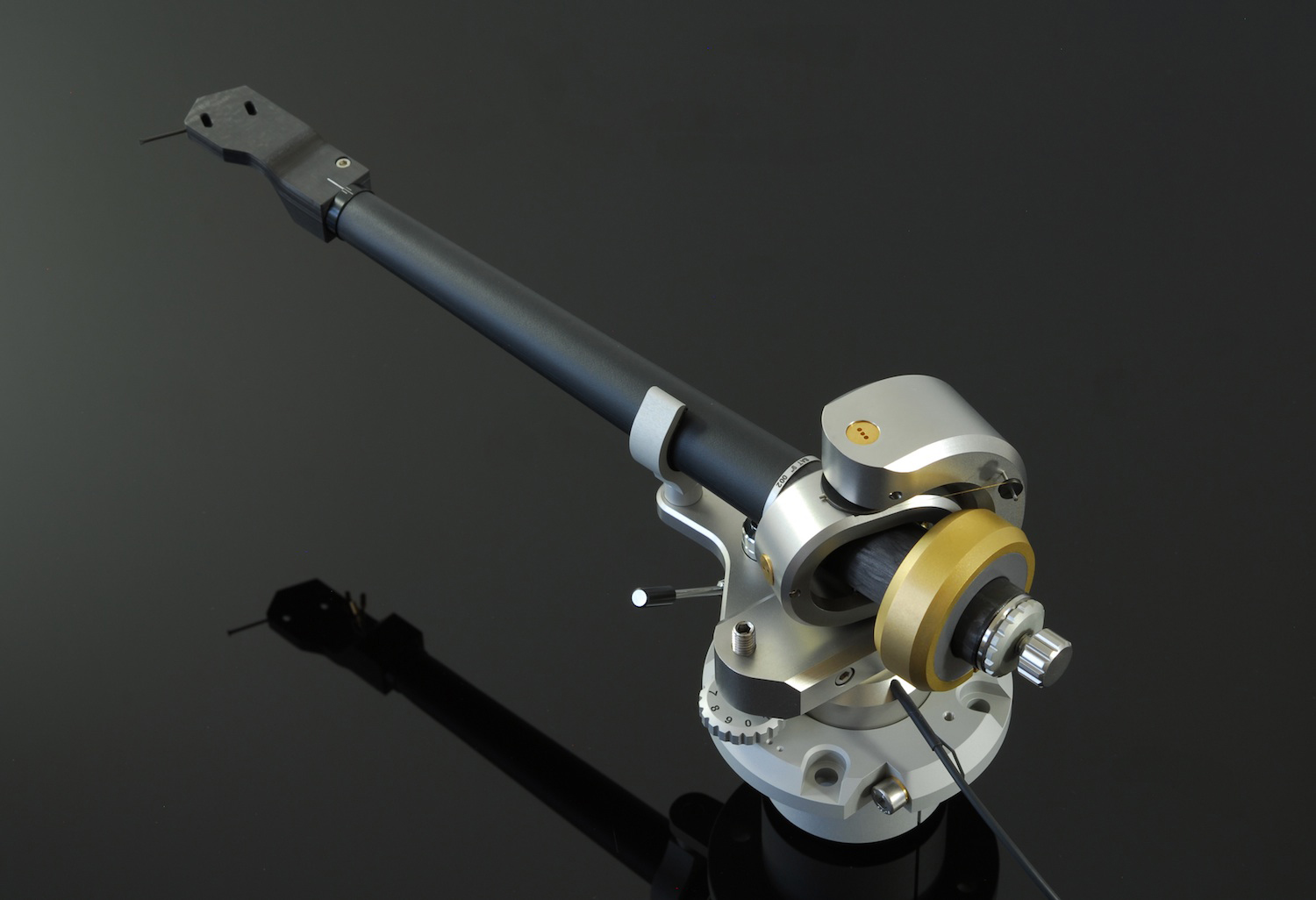
CAD/CAE Modelling
I use CAD (Computer Aided Design) tools to design my arms. When working with non-regular geometries like the ones on the SAT, the CAD models enable me to accurately get values of the moment of inertia in the vertical and horizontal axis.
I can then customize arms to a specific effective mass, creating a more suitable match for specific cartridges. It is always preferable to have as much mass as possible for a specific cartridge - a function of the mass of the cartridge itself and the stiffness of its suspension.
More mass gives better damping and, rightly placed, much higher rigidity. To achieve that, it has to be correctly used in order not to exceed a certain moment of inertia around each axis. It is very remarkable how many arms considered top performers, have thin constant-section tubes lacking the rigidity any high performance arm must have to be worthy of this qualification.
Another important tool I use is CAE (Computer Aided Engineering). I use it to simulate the deformation of different components in the arm under load, and to decide what geometry and material combination to use to achieve the design targets. Components such as the clamping devices in the headshell or the arm base have been designed using this tools.
Using FEM (Finite Element Method) calculations, the natural frequencies and modes of the arm tube and headshell can be predicted. Modifications of design in the CAD models of the arm can be evaluated with the FEM models and the impact on the resonance frequencies assessed.
In summary, CAE tools allow me to predict the behaviour of the arm and give you the ultimate performance you expect from SAT.
Carbon Fiber Composites
Most audiophiles have seen different audio equipment with components made out of carbon fiber composites (CF). They are often found in turntables and tonearms, acting mainly as a fashionable high-tech-looking material without a real structural role. These parts replace existing metal or plastic components and retain their original geometry, making a very poor use of the marvellous properties CF has to offer.
Unlike what is common practice in other pickup arms, I design the composite parts myself and dimension them to give the desired mechanical properties. Off-the-shelf carbon fiber components used in most other arms lack the stiffness of the laminates I use, and do not come in the geometries required to provide high rigidity.
They are typically thin-walled tubes of constant diameter made with woven CF fabrics, or UD laminates with fibers along the arm's longitudinal axis only. These configurations DO NOT provide addecuate mechanical properties for the arm.
I define and use the laminates in the proper way, using them to their full potential, placing the fibres along the directions where the stiffness must be high. This is how it is done in the aerospace industry, F1 cars or other applications where maximizing the rigidity per unit of mass is of paramount importance. This is how it is done in the industries where serious engineering is mandatory and the customers want to get performance for their money. Why shouldn't it be done properly in the audio industry, as well?
Each laminate is made of several plies of CF pre-preg fabrics. Pieces for different plies are CNC machine-cut following a pattern extracted from the CAD models of the arm, then laid sequencially to a tool, taking into consideration the load paths so that the component will deform very little during use, under the effect of loads.
With this process, a complex structure with varying thickness and stiffness through the tube can be created, providing unparalleled mechanical properties compared to traditional arm tubes. In the case of the SAT, its tube and headshell have ca. 20 and 40 plies of CF respectively.
The laminated parts are cured in an autoclave under pressure and temperature, using the same material and equipment composite parts for satellites are typically manufactured with. This is a costly process as it is labour-intensive and the equipment and material is in short supply and expensive.
The result is a component made of a material with one of the highest specific stiffness available today, and which is typically only found in the aerospace or very advanced medical, automotive and sporting goods applications.
The SAT laminates achieve much higher specific stiffness than other materials used by other arm manufacturers. Proof of it is the very high first resonance frequency of the arm tube at 3.0kHz.